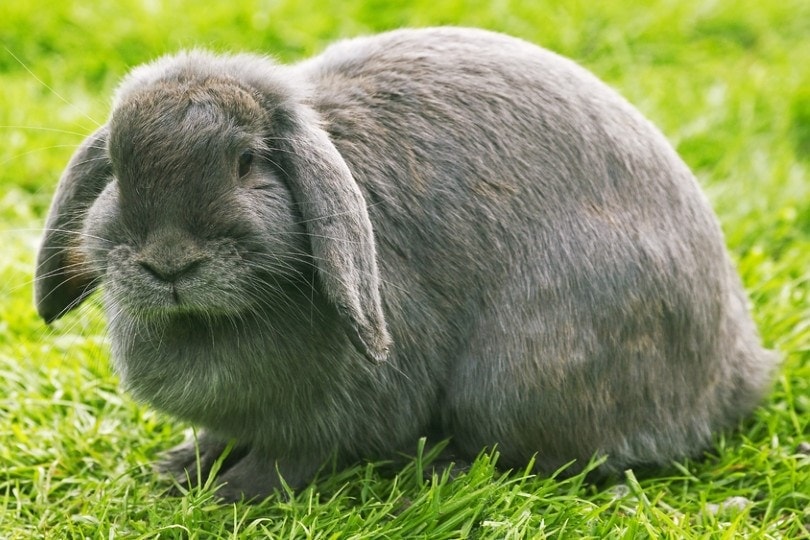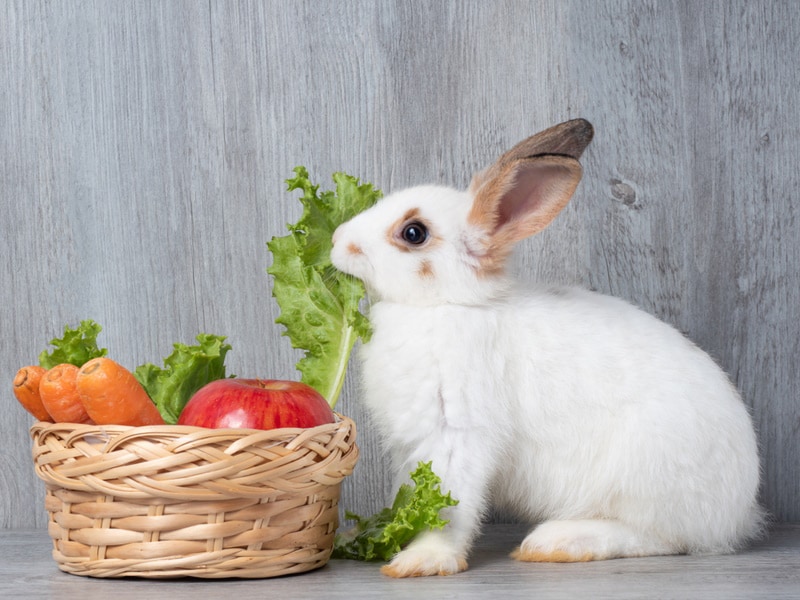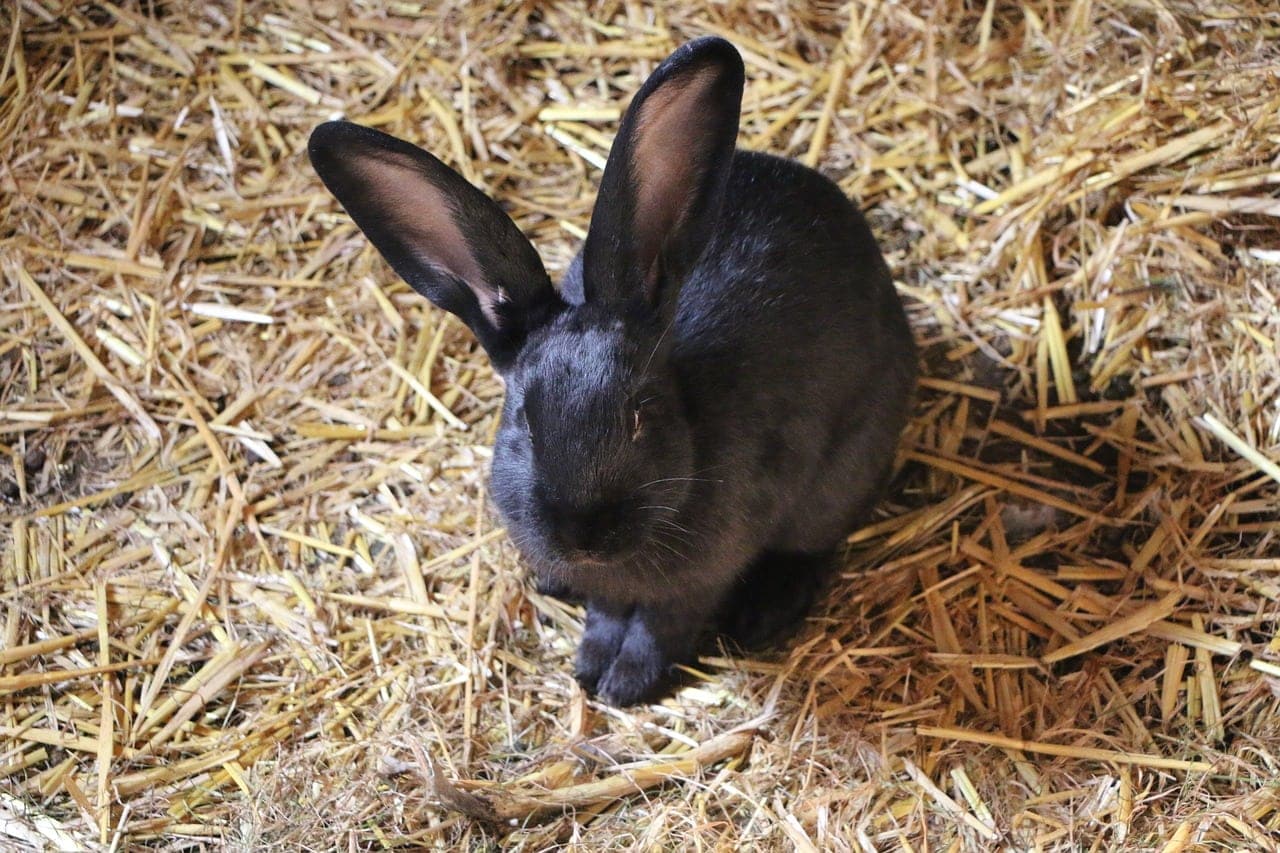Giant Chinchilla Rabbit: Info, Care, Diet, Pictures & More

Updated on
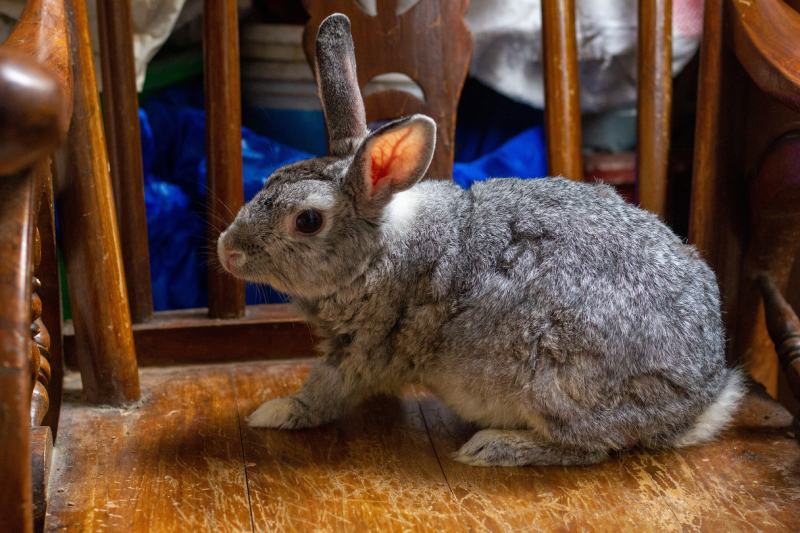
The Giant Chinchilla rabbit is related to the Standard Chinchilla and American Chinchilla rabbits, and you might be puzzled about their choice of name because Chinchillas and rabbits aren’t the same. Well, the Standard Chinchilla rabbit can be traced back to 1919 France, where they were bred for their pelts and meat, and their name refers to the texture and color of their fur, which is similar to that of a Chinchilla’s.
They’re known for being so laid back that they’re almost lazy, and they’re beautiful and make wonderful pets. Giant Chinchillas are gentle giants, and if you’re here because you want to know a little more about them, from their temperament to their lifespan, you’ve come to the right place!
| Size: | Giant |
| Weight: | Up to 16 lbs |
| Lifespan: | 8–9 years |
| Similar Breeds: | American Chinchilla, Checkered Giant, Standard Chinchilla, Flemish Giant Rabbit |
| Suitable for: | Outdoor or indoor living, first-time rabbit owners, families with older kids, seniors |
| Temperament: | Gentle, docile, playful |
The Giant Chinchilla rabbit has a semi-arched body, a soft white underbelly, and powerful feet and legs. It didn’t take long after the Standard Chinchilla rabbit emerged for breeder Edward Stahl of Kansas City, Missouri, to show that bigger really is better and cross the Chinchilla with the white Flemish Giants, an American Blue, and white New Zealands to create what we now know and love as the Giant Chinchilla rabbit. They’re even-tempered, sweet, and so easy to be around that they are perfect for first-time rabbit owners.
Giant Chinchilla Rabbit Characteristics
How Much Do Chinchilla Rabbits Cost?
You can expect to pay $40 to $100 for a Chinchilla rabbit, but you need to also factor in everything that comes with getting a pet rabbit for the first time, such as:
- Hutch/cage: These will need to be large to accommodate the size of this rabbit and can range from $75–$130.
- Food and hay: You’ll be looking at around $40–$60 a month.
- Other necessities: Toys, grooming supplies, water bottles, and cage dishes will be needed.
You can also look for rabbits in shelters and rescue groups, which will save you money and give a rabbit a much-needed forever home.
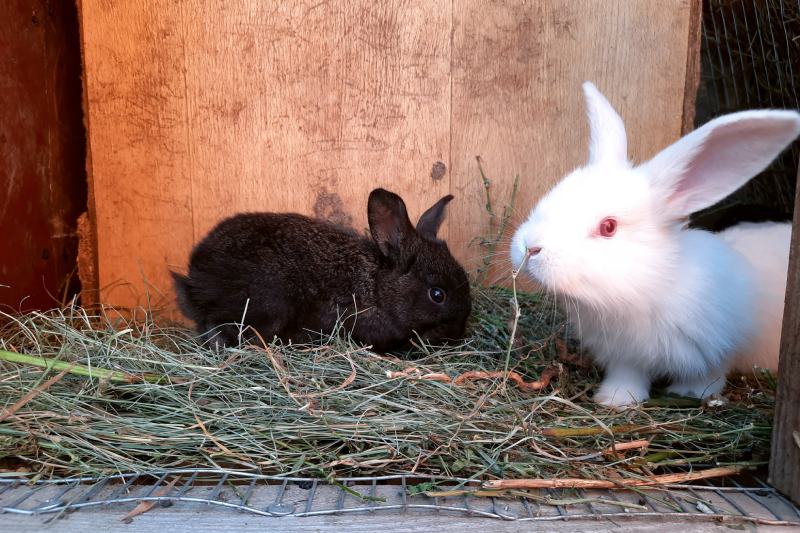
Temperament & Intelligence of the Giant Chinchilla Rabbit
The Giant Chinchilla rabbit is an easy-going individual that is content to sit back and watch their family get on with their busy lives. They make excellent family pets for most families; they are suitable for single people, seniors, and families with children as long as they have been exposed to kids from a young age.
Since the Giant Chinchillas are so laid back that they’re considered lazy, it will be up to you to encourage them to move. You’ll get to know your rabbit through time and be able to find the best toys suited to their personalities to encourage them to play.
Do These Rabbits Make Good Pets? 👪
Yes, Giant Chinchilla Rabbits make wonderful pets and can be kept indoors or outdoors. Unfortunately, they are unsuitable for small living spaces or apartments because of their size. They enjoy being handled if you introduce it to them from a young age.
They are tame and can be taught to come to you when it’s time to eat or when you call on them. They get anxious around young children, so they should be able to safely retreat if young children are trying to prod and poke them. Ideally, you should have older children, around 10 years old and above, if you bring a Giant Chinchilla Rabbit into your family.
Does This Rabbit Get Along With Other Pets?
Generally, Giant Chinchilla Rabbits get along with dogs and cats as long as they are introduced early and the other pets are no longer puppies or kittens. They tend not to like boisterous personalities and would do better with another pet that is also laid back.
 Things to Know When Owning a Giant Chinchilla Rabbit
Things to Know When Owning a Giant Chinchilla Rabbit
Food & Diet Requirements 🥕
You must supply your Giant Chinchilla rabbit with hay and large quantities of filtered water. Around 70% of their diet will be made up of hay, and the rest will be leafy greens for a boost of vitamins and minerals, pellets, and fruits and vegetables.
Make sure you take the time to look into which fruits and vegetables are suitable for rabbits and limit the ones that are particularly high in sugar. Stay clear of options like iceberg lettuce, as there is too much water and insufficient fiber to make it a nutritious addition. Also, don’t feed your rabbit grass from your yard since it can carry pesticides, fertilizer, insecticides, and many other chemicals.
Habitat & Hutch Requirements 🏠
The hutch must be a suitable size, and your rabbit should be able to stand to their full height and have room to move around and stretch out. A hutch around 6 feet long should be sufficient. Exercise is incredibly important for your Giant Chinchilla rabbit, and they need to run around freely every day.
Additionally, ensure that if you have them in a cage, the bottom is solid; they can develop sores from lying on a wire-bottomed cage for extended periods. This solid bottom should be made from either metal or plastic. Water, food, a litter tray, and toys should be available for your rabbit in their hutch.
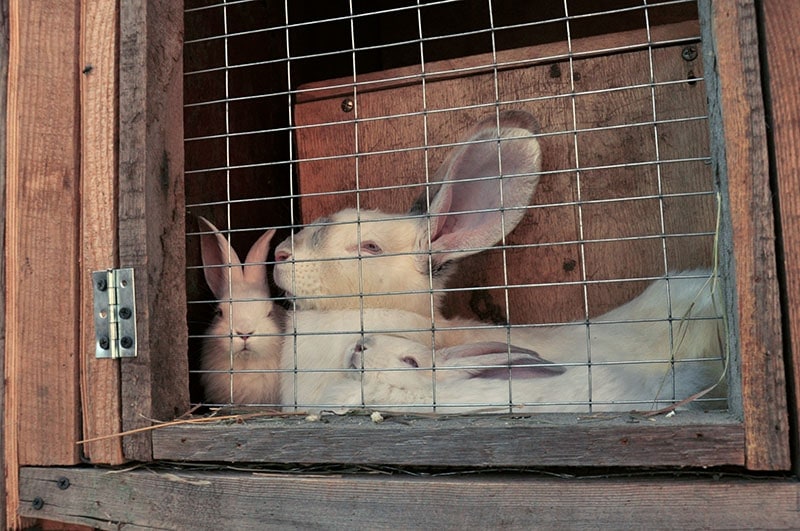
Exercise & Sleeping Needs 🐇
As mentioned, your Giant Chinchilla requires room to stretch out and move and somewhere safe to sleep. They need space to explore, and you should supervise them while they do unless they are in a secure enclosure; this will protect them from eating something they shouldn’t or being attacked by predators.
They don’t have specific exercise needs but should be moving around at least an hour a day to ensure they stay fit and healthy, but the more, the better, and at least 3 hours of free time to roam is ideal if they aren’t as laid back as the average Giant Chinchilla rabbit.
Training
Training your Giant Chinchilla will take more time and patience than training a dog. It isn’t impossible, but it is a challenge. If you have the time to do so, you can teach your rabbit:
- Potty training: Many owners will place more than one litter box in their homes so their rabbits don’t have far to go when nature calls. You can also start by placing a little hay and their droppings in the litter tray so they recognize it for what it is.
- Crate training: If your rabbit is used to being free most of the time, you might want to crate-train them for transport to the vet. Get them used to the crate with positive reinforcement. First, allow them to hop in and out of the crate by placing treats and toys in there. Slowly build up by shutting the door and increasing the time they are in there.
- Leash training: You can train your rabbit to walk on a leash, but it’s better if your Giant Chinchilla is active.
Grooming ✂️
Rabbits with thick, luxurious coats, like a Chinchilla, require more grooming than the average rabbit, but it requires even more effort when the rabbit is also a giant. If you don’t keep up with their grooming needs, they can develop digestive problems from having to groom themselves. So, brush them at least twice a week for most of the year but increase it to three times or more if needed in spring during shedding season.
Lifespan and Health Conditions 🏥
The Giant Chinchilla is relatively healthy and does not suffer from any hereditary conditions, which is why their average lifespan is so high at 8–9 years. They are prone to conditions that arise if their owners fail in their care. They can get fly strike, where flies lay eggs in a rabbit’s coat. These eggs then hatch into maggots which eat the rabbit’s flesh. Not only is this painful for your rabbit, but it can also be fatal if left untreated.
Other conditions that a Giant Chinchilla Rabbit might suffer from are ear mites, heat stroke, and respiratory disease. A rabbit’s teeth also never stop growing, so they require something to gnaw on to file down their teeth. If their teeth grow too long, they can be painful and prevent your rabbit from eating. The next step would be to contact your veterinarian, who would file them down.
- Ear mites
- Heatstroke
- Overgrown teeth
- Fly strike
- Respiratory disease
Male vs Female
There are a few notable differences between male and female Giant Chinchilla rabbits. First, females tend to be around a pound bigger, which isn’t a huge difference, but as it’s usually assumed that male animals are bigger, it is interesting to note. Another misconception is that males are generally more aggressive, but males are more docile, and females tend to be more territorial. They might lunge or even growl, but they won’t bite. Males can become destructive if they have the urge to mate, and it is unmet. You can discuss the importance of spaying or neutering your rabbit with your vet.
 3 Little-Known Facts About Giant Chinchilla Rabbits
3 Little-Known Facts About Giant Chinchilla Rabbits
1. They Were Bred for Their Fur
The Giant Chinchilla was bred for their fur until the fur trade dwindled around the 1940s, just as the American Chinchilla and Standard Chinchilla were.
2. They Have a Different Coat
They are the only rabbit with a flyback coat, which means less time is involved in maintaining their fur. However, because of the length of their fur, giant Chinchilla rabbits still need your attention to keep their coats healthy.
3. They’re Known as “The Million Dollar Rabbit.”
In 1928, the American Rabbit Breeder’s Association (ARBA) recognized the Giant Chinchilla. They were nicknamed “The Million Dollar Rabbit” because it’s thought that breeder Edward Stahl was the first and only person to make a million dollars from rabbit breeding stock.
Final Thoughts
The Giant Chinchilla Rabbit weighs up to 16 pounds and lives for around 8 to 9 years. They are known to be docile, laid-back rabbits that are happiest when they can just sit back and watch the hustle and bustle of family life. They are known to be lazy, so it is up to their owners to ensure they are getting up and moving! They’re suitable for single people, couples, first-time rabbit owners, seniors, and families with older children.
See also:
Featured Image Credit: Ramkaran Prajapati, Shutterstock

